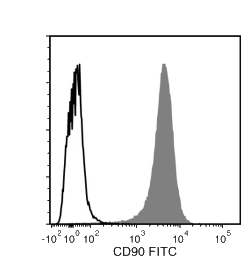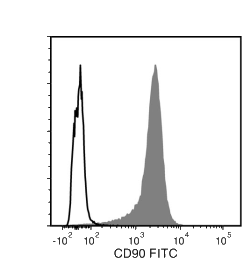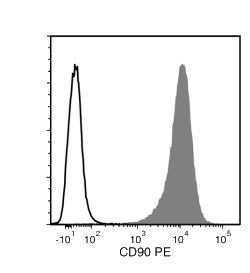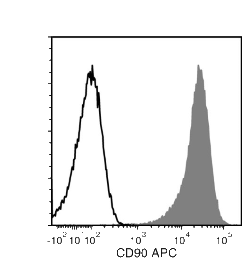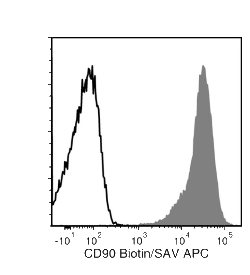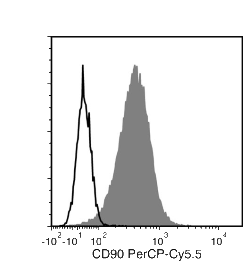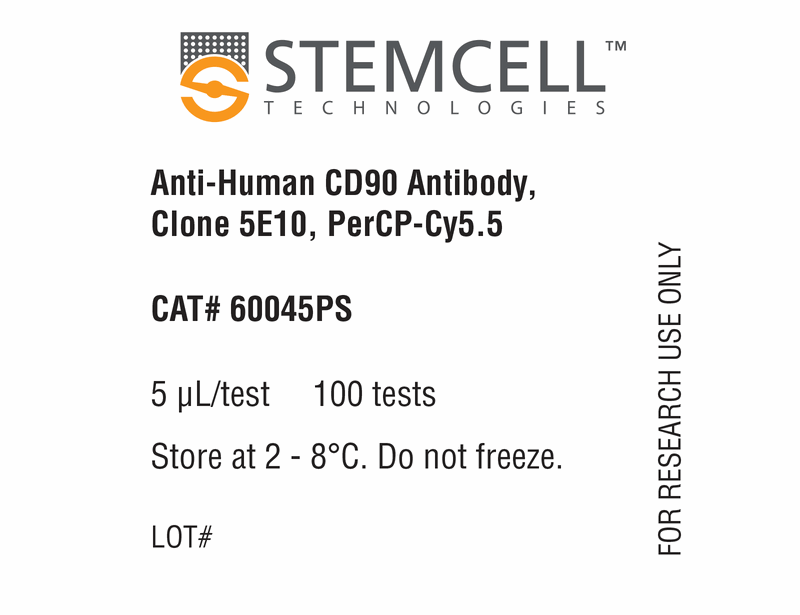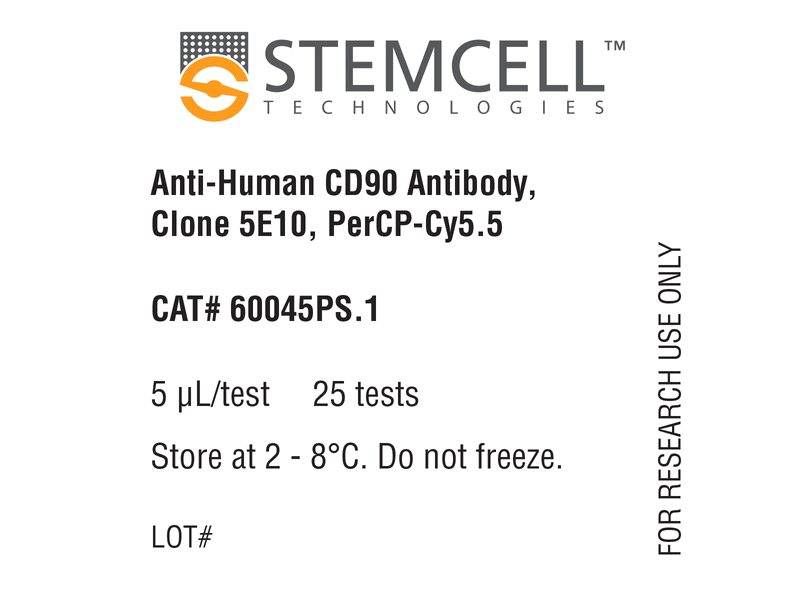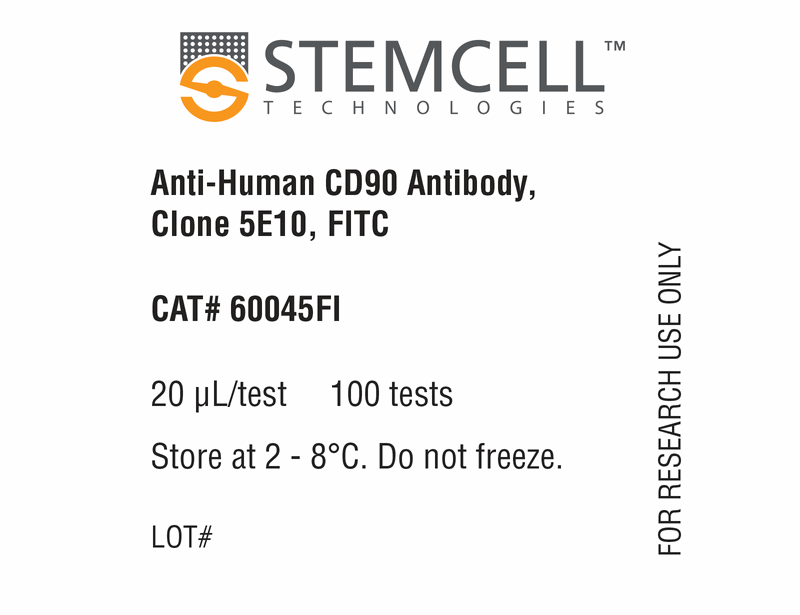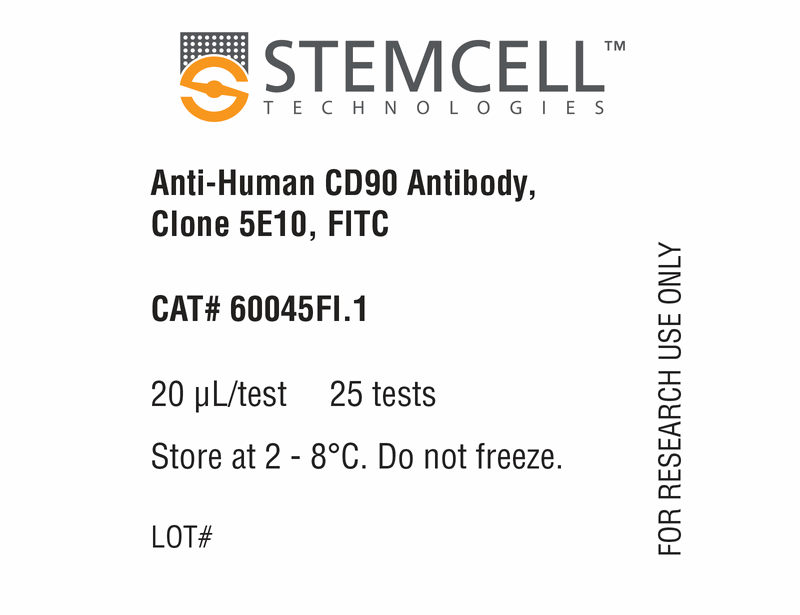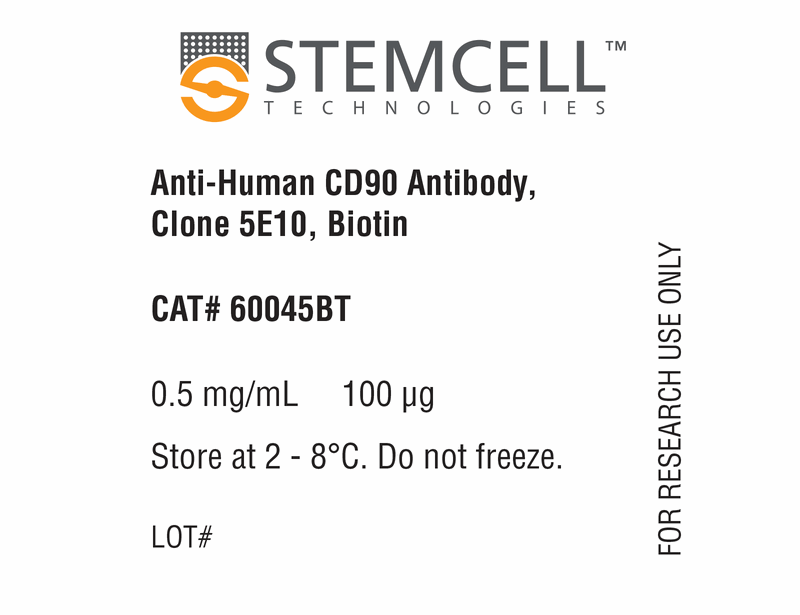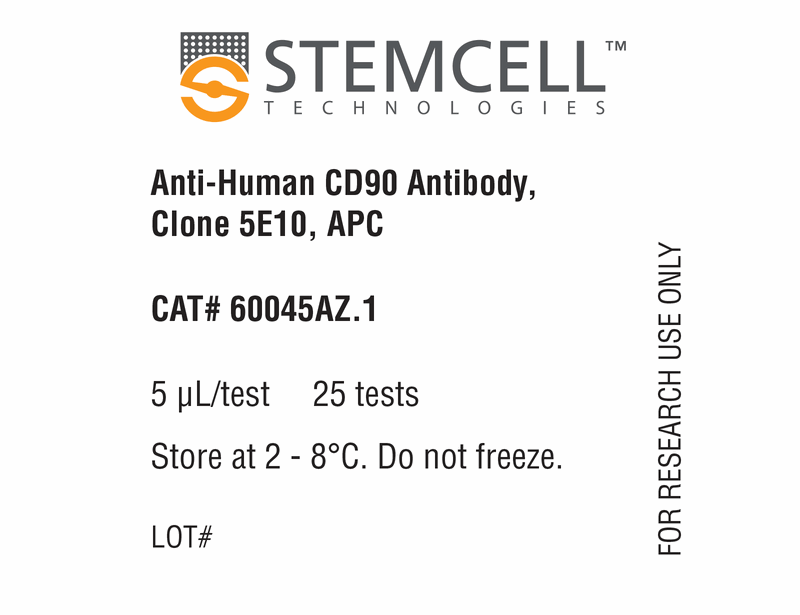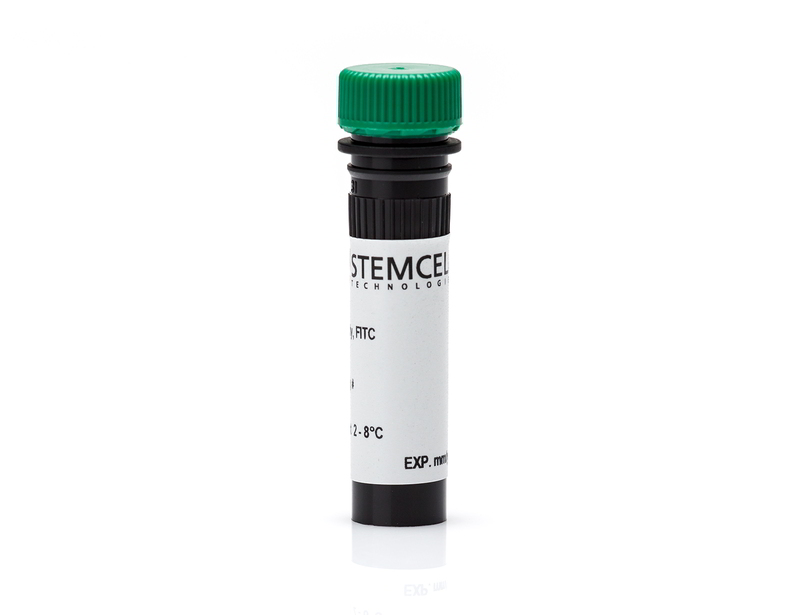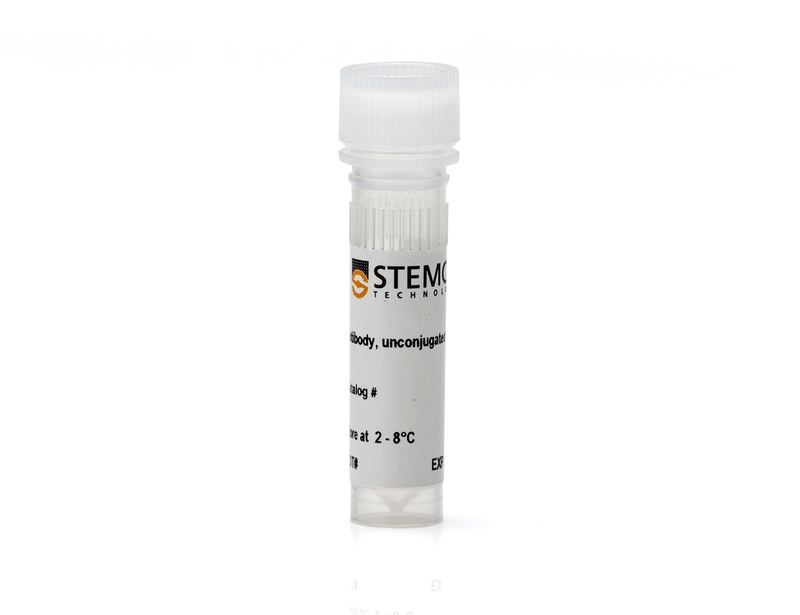Anti-Human CD90 Antibody, Clone 5E10
Mouse monoclonal IgG1 antibody against human, rhesus, cynomolgus CD90 (Thy-1)
概要
The 5E10 antibody reacts with CD90 (Thy-1), a GPI-linked membrane glycoprotein that is N-glycosylated at two sites, giving rise to 25 - 37 kDa molecules. CD90 has roles in signal transduction, cell adhesion and migration, neurite outgrowth, T cell activation, tumor suppression, and inhibition of the proliferation and differentiation of hematopoietic stem cells. It is a known ligand of β2 and β3 integrins and upregulates synthesis of fibronectin, osteonectin and thrombospondin. CD90 is broadly expressed, being found on human thymocytes, neurons, some glial cells, fibroblasts, activated endothelial cells, some leukemia cell lines and a distinct subset (<1%) of CD3+CD4+ T cells in human peripheral blood. CD90 is also expressed by small subsets of CD34+ cells in fetal liver, umbilical cord blood, bone marrow and mobilized peripheral blood cells. CD90 is considered an important marker for hematopoietic stem and progenitor cells and, in combination with other markers such as CD34, is useful to identify and isolate these cells by FACS.
This antibody clone has been verified for labeling human mesenchymal cells grown in MesenCult™ Proliferation Kit (Human; Catalog #05411) and MesenCult™-XF Medium (Catalog #05420).
Baboon, Cynomolgus, Rhesus, Dog, Human, Macaque, Pig
APC, Biotin, FITC, PE, PerCP-Cyanine5.5, Unconjugated
Hematopoietic Stem and Progenitor Cells, Mammary Cells, Mesenchymal Stem and Progenitor Cells
Human, Non-Human Primate, Other
CyTOF, ELISA, Flow Cytometry, Immunocytochemistry, Immunofluorescence, Immunohistochemistry, Immunoprecipitation, Western Blotting
Epithelial Cell Biology, Stem Cell Biology
技术资料
| Document Type |
产品名称 |
Catalog # |
Lot # |
语言 |
|
Product Information Sheet
|
Anti-Human CD90 Antibody, Clone 5E10
|
60045 |
All |
English |
|
Product Information Sheet
|
Anti-Human CD90 Antibody, Clone 5E10, APC
|
60045AZ, 60045AZ.1 |
All |
English |
|
Product Information Sheet
|
Anti-Human CD90 Antibody, Clone 5E10, Biotin
|
60045BT |
All |
English |
|
Product Information Sheet
|
Anti-Human CD90 Antibody, Clone 5E10, FITC
|
60045FI, 60045FI.1 |
All |
English |
|
Product Information Sheet
|
Anti-Human CD90 Antibody, Clone 5E10, PE
|
60045PE, 60045PE.1 |
All |
English |
|
Product Information Sheet
|
Anti-Human CD90 Antibody, Clone 5E10, PerCP-Cy5.5
|
60045PS, 60045PS.1 |
All |
English |
|
Safety Data Sheet
|
Anti-Human CD90 Antibody, Clone 5E10
|
60045 |
All |
English |
|
Safety Data Sheet
|
Anti-Human CD90 Antibody, Clone 5E10, APC
|
60045AZ, 60045AZ.1 |
All |
English |
|
Safety Data Sheet
|
Anti-Human CD90 Antibody, Clone 5E10, Biotin
|
60045BT |
All |
English |
|
Safety Data Sheet
|
Anti-Human CD90 Antibody, Clone 5E10, FITC
|
60045FI, 60045FI.1 |
All |
English |
|
Safety Data Sheet
|
Anti-Human CD90 Antibody, Clone 5E10, PE
|
60045PE, 60045PE.1 |
All |
English |
|
Safety Data Sheet
|
Anti-Human CD90 Antibody, Clone 5E10, PerCP-Cy5.5
|
60045PS, 60045PS.1 |
All |
English |
数据及文献
Publications (1)
Cell 2018 JAN
Intrinsic Immunity Shapes Viral Resistance of Stem Cells.
Wu X et al.
Abstract
Stem cells are highly resistant to viral infection compared to their differentiated progeny; however, the mechanism is mysterious. Here, we analyzed gene expression in mammalian stem cells and cells at various stages of differentiation. We find that, conserved across species, stem cells express a subset of genes previously classified as interferon (IFN) stimulated genes (ISGs) but that expression is intrinsic, as stem cells are refractory to interferon. This intrinsic ISG expression varies in a cell-type-specific manner, and many ISGs decrease upon differentiation, at which time cells become IFN responsive, allowing induction of a broad spectrum of ISGs by IFN signaling. Importantly, we show that intrinsically expressed ISGs protect stem cells against viral infection. We demonstrate the in vivo importance of intrinsic ISG expression for protecting stem cells and their differentiation potential during viral infection. These findings have intriguing implications for understanding stem cell biology and the evolution of pathogen resistance.
View All Publications
